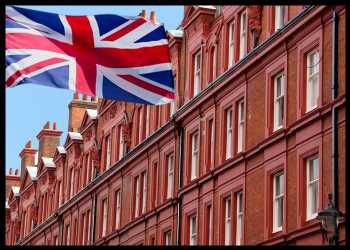UK house prices unexpectedly declined in April as higher interest rates to tame stubbornly high inflation weighed on affordability and demand, results of a survey by the Lloyds Bank subsidiary Halifax showed Tuesday.
House prices decreased 0.3 percent on a monthly basis in April, in contrast to the 0.8 percent increase in March, the survey revealed.
This was the first fall in four months. Prices were forecast to rise 0.2 percent.
On a yearly basis, house prices gained only 0.1 percent. This followed a 1.6 percent rise in March, data showed.
A typical UK property cost GBP 286,896 compared to GBP 287,891 in March.
Recent house price movements reflected the short-term volatility seen in borrowing costs, Halifax Mortgages Director Kim Kinnaird said.
Declines in house prices seen after September’s ‘mini-budget’ preceded something of a rebound in the first quarter as economic conditions improved, Kinnaird noted.
Kinnaird also observed that the economy has proven to be resilient with a strong labor market and consumer price inflation forecast to slow sharply in the coming months. Moreover, mortgage rates are stabilizing, providing certainty to would-be buyers.
The cost of living crisis combined with the impact of higher interest rates gradually feeding through to those re-mortgaging their current fixed-rate deals, some further downward pressure on house prices is expected over course of this year, added Kinnaird.
The Halifax survey data was in contrast to the house price report from the Nationwide Building Society released last week.
The Nationwide survey had shown that house prices increased 0.5 percent monthly in April after falling for seven straight months.
Mortgage approvals for house purchases increased sharply to 52,000 in March from 44,100 in February, data from the Bank of England showed last week. This was the highest since October 2022.
The BoE has raised its key interest rate by 415 basis points in the current tightening cycle that began in December 2021. The benchmark rate has hit the highest since early 2008.
The bank is widely expected to lift the rate by a quarter-point on Thursday.
Elsewhere, data from British Retail Consortium showed that like-for-like sales increased 5.2 percent annually in April, reversing a 1.7 percent fall in the same period last year.
Retailers expect sales to improve over the warmer summer months, especially as consumer confidence stabilizes and inflation begins to ease, BRC Chief Executive Helen Dickinson said.
Nonetheless, they face huge cost pressures from a tight labor market, high energy prices and other rising input costs, with many retailers reporting lower profits this year.
Source: Read Full Article
-
Mission accomplished? Fed’s inflation success raises hopes for RBA
-
Fight Inflation: Don’t Buy Eggs
-
Property Tax Rebate From New Jersey: Deadline Looms For Seniors To Apply
-
UK Service Sector Maintains Strong Growth Momentum
-
ZIM Integrated Shipping Q4 Results Down, But Top Estimates; Stock Up In Pre-market

